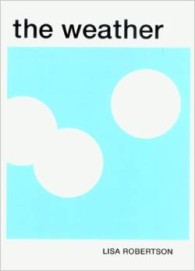 Positively 4th Street: The Lives and Times of Joan Baez, Bob Dylan, Mimi Baez Fariña, and Richard Fariña
Positively 4th Street: The Lives and Times of Joan Baez, Bob Dylan, Mimi Baez Fariña, and Richard Fariña
David Hajdu
Farrar, Straus & Giroux ($25)
Song and Dance Man III: The Art of Bob Dylan
Michael Gray
Continuum ($35)
by Chris Fischbach
Earlier this month, Bob Dylan released Love and Theft, an album saturated with old blues, folk, and rockabilly. In some sense, it is a continuation of his previous album, Time Out of Mind, but juicier, quicker, and more electric. It has been many years since the American public has eagerly awaited the newest Dylan album to listen to "what's next," or to how he will continue or recover from his past mistakes or successes. In the great albums of the sixties and seventies, Dylan's lyrics and music reflect his struggle to make room for himself in the canon of American Folk music; these days, he has arrived, finally, and his lyrics and music display a solid and wise confidence as Dylan and his music slowly fade into the background of a tradition. Fade, that is, in the best sense of becoming entrenched in the folk consciousness. There is very little Bob Dylan in these latest albums, as there was, say, in Blood on the Tracks or Another Side of Bob Dylan. These days, Dylan the artist matters much less than the work. As they say: don't trust the singer; trust the song.
In the flurry surrounding his sixtieth birthday, it was difficult to open a newspaper or variety magazine and not find an in-depth article or retrospective on Bob Dylan. Subsequently, two books of note were published (one of them re-published) to add to the fray and to provide a launching pad for discussion. David Hajdu's Positively 4th Street: The Lives and Times of Joan Baez, Bob Dylan, Mimi Baez Fariña, and Richard Fariña is perhaps the more glamorous, the more readable and gossipy of the two. It is, in fact, not a Bob Dylan book, as the author has so fervently indicated in interviews. I will only concede Hajdu this point because it happens to be true; however, the book is entitled Positively 4th Street, and it was released to coincide roughly with Dylan's sixtieth birthday. Granted, Hajdu may have had nothing to do with that decision, but writers shouldn't be blind to the fact that their publisher's actions will cast meaning onto their books and do point critics and reviewers in certain directions. As they say: trust the book, not the publisher.
In any event, it's not a Bob Dylan book, or so says this reviewer. Rather, as its subtitle clearly states, it's a book about the lives and times of four intriguing people—and possibly it's not even a book about them. Positively 4th Street is a seamlessly written multibiography of the rise of these four musicians into stardom (or in case of Mimi and Richard, semistardom; or in the case of Richard specifically, semistardom and then cult icon). It's more or less written chronologically, but their individual biographies are woven in and out of each other with graceful juxtaposition. You can see Dylan and Baez closing in on each other's lives before they even meet, written as though it weren't history, but destiny. Then they do meet, sing together, live together, and split up. In the meantime, a wide array of "minor characters" serves to introduce and connect them to Richard Fariña and Mimi Baez, also seemingly destined to be together. Hajdu's triumph is to create a sort of rhizomatic scheme out of history that plays out in a disruptive, jump-cutting narrative, not unlike a slightly more cohesive version of Robert Altman's Short Cuts or even a Joseph Cornell assemblage.
More important than any of these four individuals, however, is the biography that does emerge: that of a single, symbolic unit, a sort of chimera of artists who feed off each other, love and use each other, learn from each other, and break each other's hearts. All, it seems, at least between the covers of this book, destined; all, it seems, because of Hajdu's terrific display of historical narrative (or historical narrative manipulation), destined to define an era. Thus, Positively 4th Street is also a biography of that era. The characters are less important than the details of how they interact with each other, and how that interaction is an accurate and concise depiction of how folk music disseminates, is passed down, and how it remains vital to a contemporary culture. The most valuable scenes in the book may be the details of certain sets played with certain musicians; which songs they taught each other and then how those songs were bent and twisted to create something new. Hajdu's book is a sure classic of American popular history in part because it never takes on its topics directly, but dances beautifully around them.
If David Hajdu's triumph is of precise and accurate evasion, Michael Gray is victorious for the opposite reason: He takes Bob Dylan (or, more precisely, his art) head on, and has thoroughly saturated his subject. Song and Dance Man III: The Art of Bob Dylan is a monster of a book. On my desk it sits right next to the Merriam Webster's dictionary, and I see that they are almost identical in size and shape. I lift them up: Song and Dance Man is heavier.
This is not a book for the casual reader or the dilettante Dylanist. It is more properly a reference book, and the office of its ideal reader would include the following: every Bob Dylan album, a list of every live set Bob Dylan has ever played (yes, this is supposedly available), fifty or so "essential" bootlegs, an immense collection of pre-war blues and folk records, Harry Smith's Anthology of American Folk Music, the entire Smithsonian folk and blues collection, and access to the internet with a high-speed connection and bookmarks set to roughly twenty-five vital websites. In other words, this is a book that should be plugged into the wall. If you own anything less than these items, you will sometimes feel woefully inadequate while reading this book. On the other hand, if you would love to have all of the above, this is the book for you.
Originally published in 1972, the second edition of Song and Dance Man appeared in 1981, and this is its third incarnation. Each edition has added a significant amount of pages leading up to this manifestation, which the author says he hopes "is a benign kind of labyrinth or city-state."
The book does not aim to investigate the music of Bob Dylan; instead it focuses almost exclusively on the lyrics, except when a discussion of the music is applicable or can be used to elaborate the lyrics. Gray's investigation takes aim at the lyrics from many different directions and points of view. A brief and selected list of the chapters will give you an idea: "Dylan and the Folk Tradition"; "Dylan and the Literary Tradition"; "Dylan and Rock Music"; "Dylan's Use of Language: Towards Complexity"; "Dylan's Use of Language: Towards a New Simplicity"; "Lay Down Your Weary Tune: Drugs and Mysticism"; "The Coming of Slow Train"; "Even Post-Structuralists Oughta Have the Pre-War Blues"; "Nursery Rhyme", "Fairy Tale", and "Under The Red Sky." Each chapter, then, approaches the lyrics from a different perspective, incessantly illustrating just how deeply Bob Dylan's lyrics are entrenched in folk music, blues, poetry, the Bible, nursery rhymes, and fairy tales. No New Critic, Gray painstakingly compares Dylan's lyrics with the words from those other traditions. (Some of these comparisons lead to another invaluable asset of this book, the citation of old records: name of artist, title of recording, place, date, catalogue number, year of issue, re-issue, and so on. I would venture to guess that there are at least a thousand of these listings.)
The result of Gray's thorough tracking down of the sources for Dylan's lyrics is, to this Dylan fan at least, astounding. The point that begins to emerge is that many of the lines you thought Dylan wrote have probably existed in some form or another for at least a hundred years, and have appeared variously in scores of other songs. This is, after all, how traditions work. But Gray is quick to point out once again why Dylan is a genius, in case you thought for a minute otherwise. One of his main theses is that Dylan uses blues lyrics from the past almost never verbatim in his blues songs, but instead employs the exact lyrics in his non-blues songs (though on the recent Love and Theft, it's as if Dylan is deliberately defying Gray's claim, often employing well-known blues lyrics clearly and loudly). This, by itself, would be more of a remarkable observation than a valuable breakthrough if Gray did not then convincingly argue and show how Dylan does this with tradition after tradition, making his electrifying of folk music seem emblematic of what Dylan is doing to the whole of folk language and culture. Which makes Dylan, to Gray's mind, something like a master fusionist and storehouse of folk knowledge. It's unlikely a reader of this book will not walk away from it convinced that Bob Dylan has a mind and a memory that contains all of the biblical scriptures, and all of folk and blues music, word for word—and not just that he has it all memorized, but that he understands it.
As huge in size and scope as the book is, I feel the need to mention that it is also fun to read. Many of Gray's footnotes, for example, contain out-of-critical-character passages—such as this one, responding to his own negative assessment of "Sad-Eyed Lady Of The Lowlands":
When I read this assessment now, I simply feel embarrassed at what a little snob I was when I wrote it. In contrast (and paradoxically), when I go back and listen, after a long gap, to Dylan's recording, every ardent, true feeling I ever had comes back to me. Decades of detritus drop away and I feel back in communion with my best self and my soul. Whatever the shortcomings of the lyric, the recording itself, capturing at its absolute peak Dylan's incomparable capacity for intensity of communication, is a masterpiece if ever there was one. It isn't like listening to a record: it enfolds you, to use a word from the song itself, in a whole universe.
There are many such retractions, confessions, and corrections, which lend to the book a sense of its own history and place in Dylan literature. This is accentuated by a brief, eerily self-reflexive chapter describing the state and history of Dylan criticism itself, often detailing other authors' reactions to the very book you are reading. It's that way. But one of the most astounding assertions Gray makes is one that he only briefly brings up, then drops. While discussing Dylan's lyrics in the context of Paul Auster's novel City of Glass, he writes, "The following passage too rubs shoulders with Dylan's own remarks on the relation between Bob Dylan and his creator, Robert Zimmerman." This assertion, if you can call it that, begs for an explication we never get, and we can only hope that it points to a major new section for a fourth edition of Song and Dance Man.
Readers of these books can, however, always set them down and just listen to the music, ignoring history, biography, and interpretation. As they say: Don't follow leaders, watch your parking meters.
Click here to purchase Positively 4th Street at your local independent bookstore

Click here to purchase Song and Dance Man III at your local independent bookstore

Rain Taxi Online Edition, Fall 2001 | © Rain Taxi, Inc. 2001









